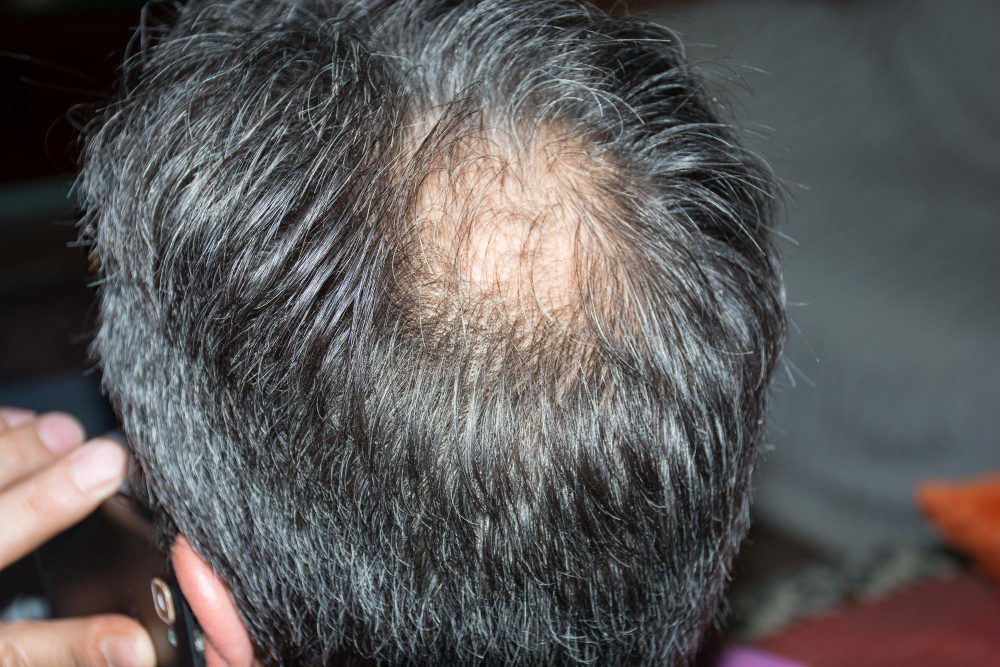At Rejuvence Clinic, we are constantly striving to push the boundaries of the treatments and services we provide, ensuring our clients have access to the most advanced and innovative options. By combining skill, compassion, and cutting-edge research, we aim to deliver exceptional care and results.
The treatment of alopecia areata presents significant challenges, particularly in severe cases where more than 30–40% of the scalp or beard is affected. While many patients initially respond well to intralesional steroid treatments, the effects of these treatments can sometimes be short-lived, necessitating alternative or supplementary approaches to achieve sustained results.
In such cases, we often recommend the use of platelet-rich plasma (PRP), which is increasingly supported by evidence as an effective adjuvant therapy for alopecia areata. Recently, emerging research has also highlighted the potential of intralesional vitamin D injections, either in combination with or as an alternative to intralesional steroids. This exciting development offers a promising treatment option, particularly for patients who are resistant to steroid therapy or prefer to avoid steroid-based treatments altogether.
In this blog, we delve into the latest research on intralesional vitamin D injections and their role in managing alopecia areata. We explore how this innovative approach may enhance existing treatment protocols or serve as a viable alternative for patients seeking non-steroidal solutions.
A comprehensive review of evidence regarding intralesional vitamin D therapy combined with intralesional steroid treatments for alopecia areata reveals promising yet variable results. The research highlights the efficacy of intralesional treatments for localized alopecia areata (AA), emphasizing their immunomodulatory effects. Below is a detailed analysis of the findings, complications, and potential treatment combinations.
Key Findings
- Efficacy of Intralesional Vitamin D3:
- Vitamin D is implicated in hair follicle cycling and immune modulation. Intralesional injections of Vitamin D3 have shown significant clinical improvement in patients with patchy AA, especially when immune dysfunction and vitamin D deficiency coexist.
- A study comparing intralesional Vitamin D3 and triamcinolone acetonide (TAC) demonstrated that both are effective but might target different immunological pathways. Combined therapy could leverage these complementary effects for enhanced outcomes.
- Role of Steroids (e.g., Triamcinolone Acetonide):
- Intralesional corticosteroids, such as TAC, are a first-line treatment for AA due to their ability to suppress inflammatory T-cell activity. They are effective in inducing hair regrowth in localized AA.
- Side effects of long-term steroid use, such as skin atrophy or telangiectasia, limit their frequent use.
- Combination Therapy:
- Emerging data suggest that combining intralesional vitamin D with steroids can provide synergistic benefits by addressing both immune dysregulation and inflammatory components of AA.
- Such a regimen might reduce the dose of steroids needed, thereby minimizing associated side effects.
- Comparative Studies:
- Clinical and dermoscopic studies have assessed vitamin D versus steroid monotherapy. Combined therapy might outperform single-agent approaches, particularly in resistant or recurrent AA cases.
Complications and Side Effects
- Intralesional Vitamin D3:
- Local reactions, including pain or burning sensation at the injection site, are common.
- Systemic side effects like hypercalcemia are rare but possible with excessive or frequent administration.
- Dermoscopic evaluation often highlights improved follicular structure but may reveal temporary hypopigmentation.
- Intralesional Steroids:
- Local side effects include skin thinning, depigmentation, and telangiectasia.
- Overuse can cause adrenal suppression, though this is rare with localized intralesional injections.
- Resistance can develop in chronic cases, requiring adjunctive therapies.
- Combination Therapy:
- The combination appears to mitigate some side effects, such as steroid-induced atrophy, due to dose-sparing effects. However, comprehensive long-term safety data are lacking.
Potential Treatment Combinations
- Intralesional Therapies:
- Vitamin D3 and Triamcinolone Acetonide: Offers complementary mechanisms—steroid reduces inflammation while Vitamin D modulates immune function and follicular health.
- Vitamin D3 and Platelet-Rich Plasma (PRP): Emerging evidence suggests PRP enhances follicular regeneration and might pair well with Vitamin D’s immunomodulatory effects.
- Topical Adjuncts:
- Calcipotriol (Vitamin D analogue): Enhances the effects of systemic or intralesional therapies by stimulating follicular keratinocytes.
- Tacrolimus: Combined with Vitamin D analogs for mild cases or as maintenance therapy.
- Systemic Support:
- For severe or widespread AA, systemic treatments (e.g., JAK inhibitors) may complement localized intralesional regimens.
Conclusion
The combination of intralesional vitamin D3 and steroids for alopecia areata offers a promising strategy, particularly in cases of steroid resistance or recurrent AA. While the side effects are generally mild and localized, long-term studies are needed to confirm their safety and efficacy. Further exploration of adjunctive therapies, including PRP and JAK inhibitors, could optimize outcomes in resistant cases.
At Rejuvence Clinic, we are committed to offering treatments that go beyond what is typically available through the NHS. Conditions like alopecia areata are often not prioritized for treatment within the NHS due to restricted protocols and guidelines dictated by NICE or local hospital trusts.
At Rejuvence, our focus is to provide a comprehensive range of treatments tailored to alopecia areata. We prioritize safe, evidence-based solutions while also exploring innovative treatments that may not yet be widely available. Our goal is to offer patients advanced options supported by research, enabling them to access the latest developments in care.
Our doctors stay up to date with current research and trends in the conditions we specialize in, ensuring we consistently provide cutting-edge treatment options. While we strive to push the boundaries of available care, patient safety remains our top priority. We meticulously assess all treatments to minimize potential complications and side effects, ensuring the highest standards of safety and efficacy.
For further information on advanced treatments, including the integration of intralesional vitamin D injections, steroid therapies, or PRP (Platelet-Rich Plasma) for alopecia areata, contact us at 020 7531 6600. Alternatively, visit our website and click on the WhatsApp icon to chat directly with a member of our team.

